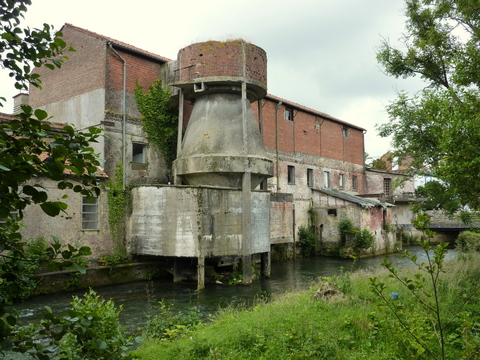 Thanks to our good friend Jeremy Lucas, the Urbantrout team has been out on the road again… this time exploring some of the chalkstreams of northern France.
Thanks to our good friend Jeremy Lucas, the Urbantrout team has been out on the road again… this time exploring some of the chalkstreams of northern France.
One of these was the River Aa: a ruisseau craie that rises at Bourges on the high chalk plateau of the Artois region, and flows broadly north east to meet the English Channel between Calais and Dunquerque. Within just 40 km, it falls from a height of 122m above sea level to 11m at the point where it meets the Blequin at Lumbres, and is canalised and navigable from St Omer downstream to the sea.
Steep chalkstream headwaters with constant year-round flow can only mean one thing… historic harnessing for hydropower. Which also means that the valley of the upper Aa offers more than a few opportunities for the kind of post-industrial edgeland exploration we love best (and which other, less epicurean fly-fishers, may pass by on the other side!)
At Ouve-Wirquin, for instance, now a sleepy rural town of less than 600 inhabitants, the Aa flows past (and under, and through) an industrial complex which was once a paper mill, then became a welding factory, and was finally abandoned for decades before being converted into a motor museum showcasing the pride and joy of les Brigades de l’Aa – a meeting of motoring and industrial heritage in a place that nature was already rewilding for itself.
According to local newspaper reports, repurposing the old mill apparently took more than 6,700 hours of voluntary work to strip out 109 lorry loads of waste and replace 197m of pipework and guttering… but the former factory’s back is still firmly turned on the Aa.
Generations of rusty, evil-looking pipes are topped off with a single massive concrete retort that looms over the river, while a flock of pigeons flutters in and out of holes in the walls, oblivious to one of their confreres that’s floating, freshly dead but still quite dry, in the margins.
Still, the clear waters and billowing ranunculus beds below are swarming with caseless caddis and blue-winged olive nymphs, and a rare riseform shows where a trout has snatched something off the surface, tucked so far under the Japanese knotweed that no number of daring casts will actually tempt him out into the daylight. It’s already clear that these ruisseaux craie do get a lot of fishing pressure, so chances are good that he’s seen my kind of CDC Plume Tip before – maybe all the more because this stretch of the river has been designated as fly-only and ‘No Kill’ (controlled under the local association’s carte de peche).
Tomorrow, under blistering sun and the keen scrutiny of the local deputy garde, this same pattern will finally earn a triumphant permanent place in my fly box – crowning a long, drag-free drift with a wonderful trout from translucent currents beside the all-weather sports pitch in Wavrans.
But here and now, waist-deep in the big mill pool, I switch back to a pink-beaded tungsten nymph that’s served me well on high-gradient limestone streams back home in the UK, and flip it into the roiling currents along the opposite concrete bank. On the third cast, a sharp tug straightens the subtle grey fly line, and a little silver truitelle goes wildly airborne.
There’s a nasty moment when I think we’re tangled in an all-too-familiar skein of fallen metalwork, but the hook holds, and the glistening beauty of my first French fish for far too many years finally slides into the net under the shadows of that brutalist concrete gantry.
Bonjour, les truites de la France industrielle…
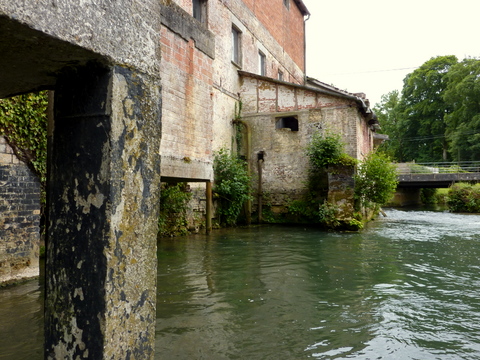
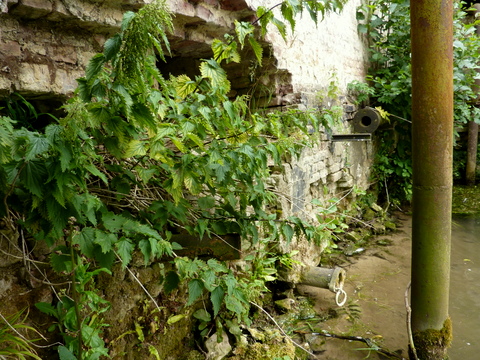
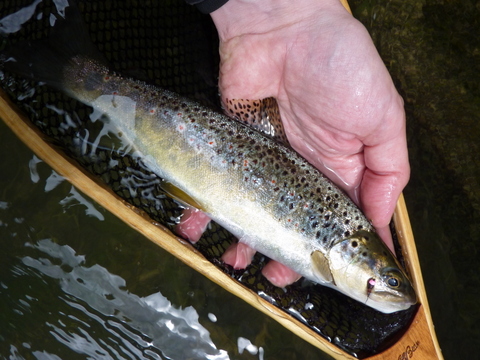
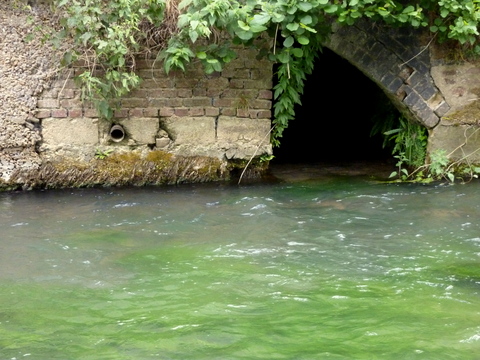
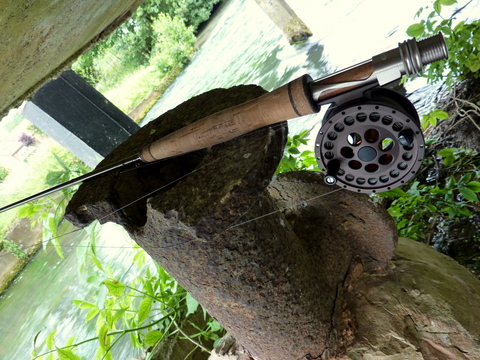
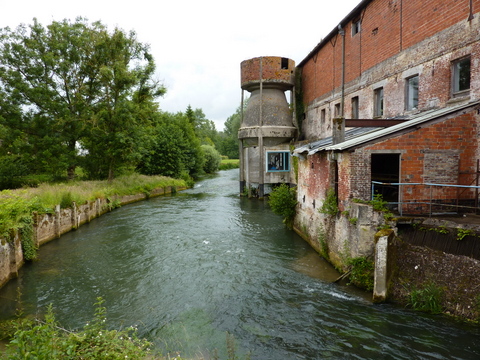
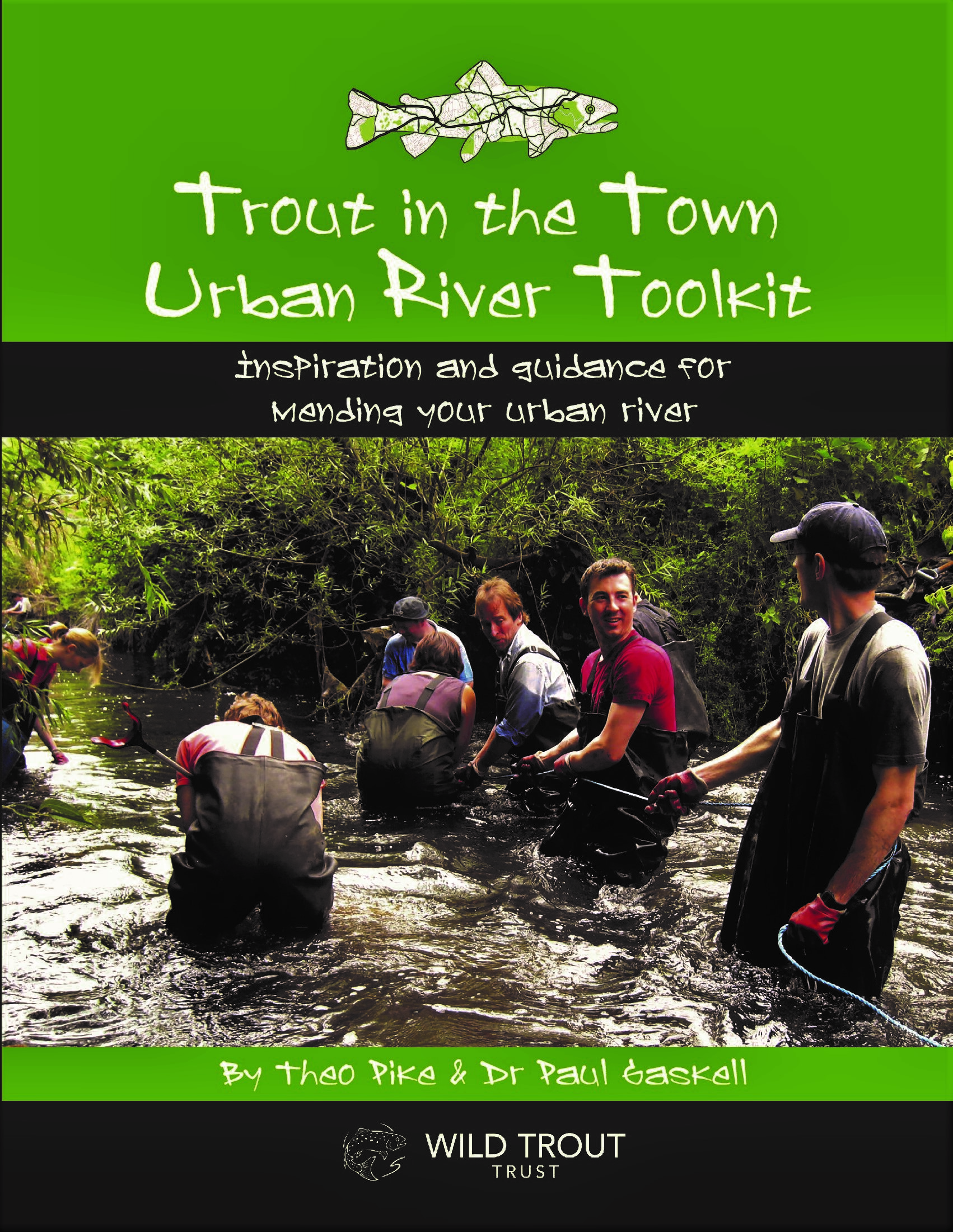
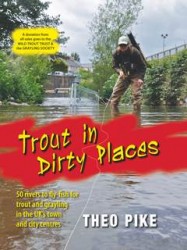
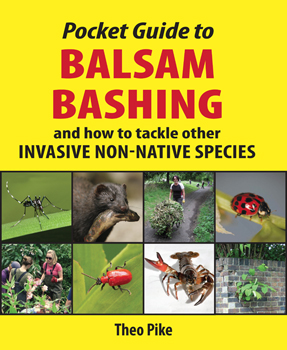
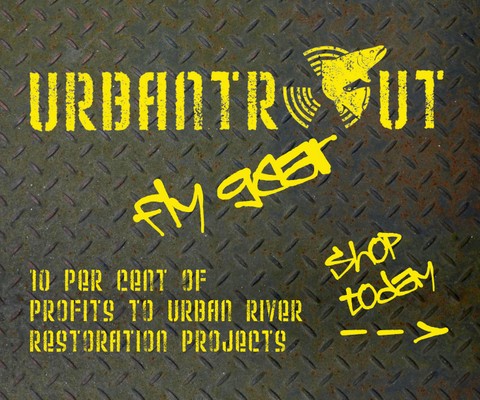
Looks like an interesting spot.